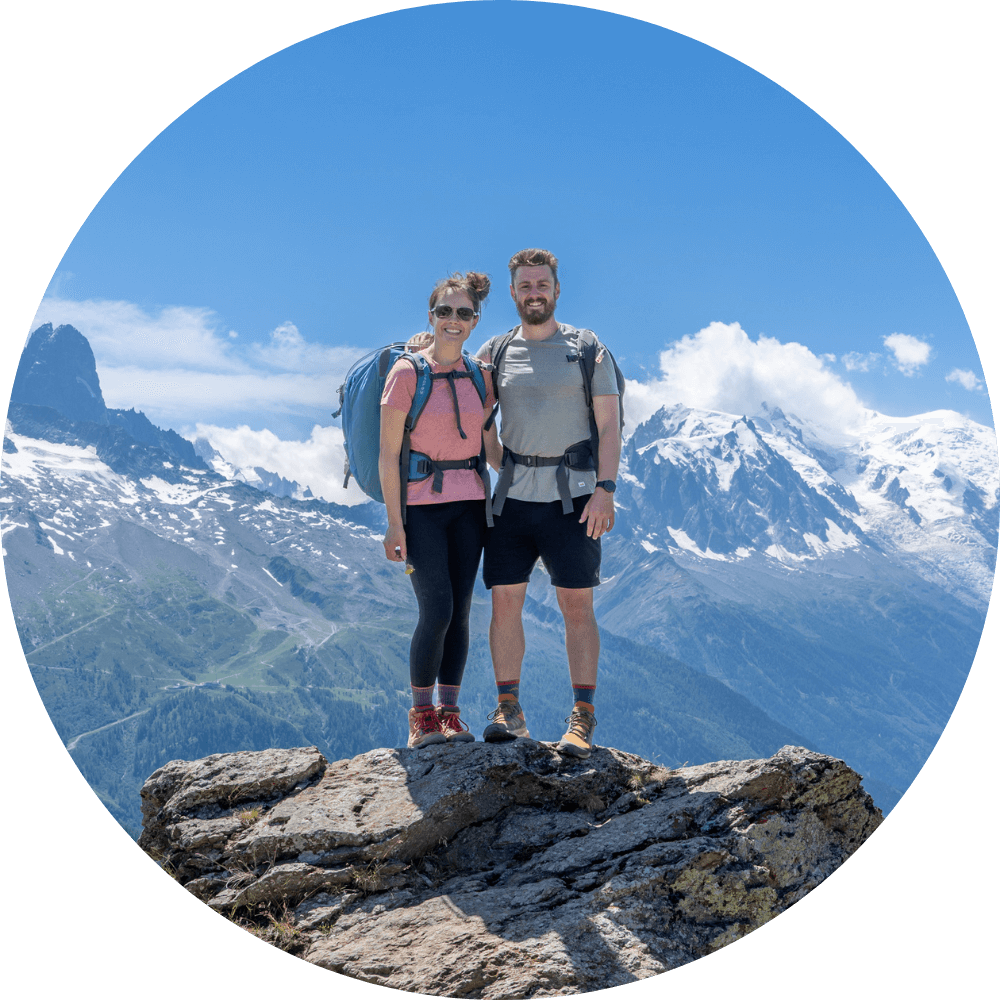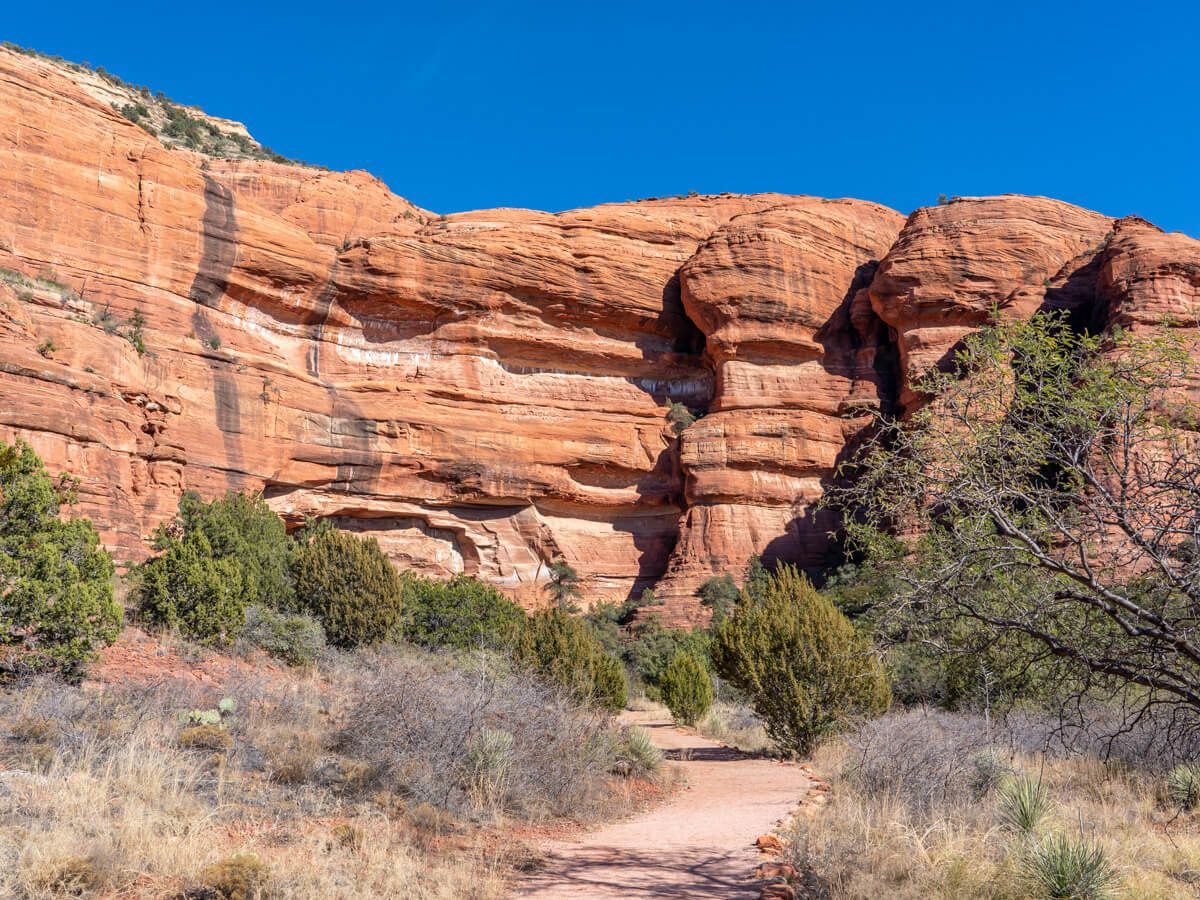The Palatki Heritage Site is an archeological area located within the Coconino National Forest near Sedona, Arizona featuring rock art and cliff dwellings built by the Sinagua people between 1150-1350 AD. The only way to visit is with a reservation and guided tour, so make sure you book in advance.
In this guide we explain everything you need to know about visiting the Palatki Heritage Site, based on our experiences. Read more about us.
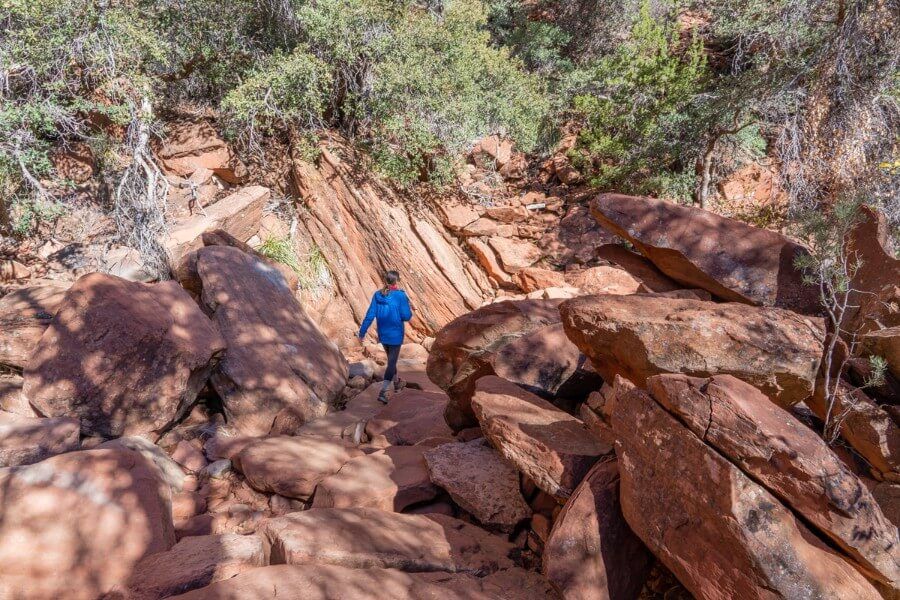
We explored the Palatki Heritage Site along with several other ancient ruins near Sedona in December 2021. During this trip, we took the guided tour offered by the amazing forest service volunteers who work at the site. And we also spent some time in the museum after our tour.
Not only do you need a reservation to visit Palatki, but the roads leading to this historical site can be difficult to navigate. This guide will tell you everything you need to know including tips for your visit.
Note: Our content is reader supported and contains affiliate links. If you make a purchase through one of these links, we may earn a small commission at no extra cost to you and it helps us keep this site running.
SEDONA Planning
📖 Ultimate Sedona Guidebook: Get our complete 50+ page offline PDF with everything you need for Sedona.
📞 Personalized Sedona Planning Call: Book a 60 minute call with Mark to have your questions answered, optimize your itinerary, avoid tourist traps and get our best insider tips.
💡 Still Planning? Read our essential first-timer’s guide to visiting Sedona.
What Is The Palatki Heritage Site?
The heritage site at Palatki features a collection of cliff dwellings and rock art. It’s estimated Palatki was built between 1150-1350 AD by the Sinagua. This area also showcases pictographs, or painted symbols, from every native culture to occupy the Verde Valley.
Archeologists believe this was one of the Sinagua’s largest and most important communities. The ruins are currently run by the U.S. Forest Service under the Red Rock Program.
The dwellings and pictographs were first detailed by Dr. Jesse Walter Fewkes, the famous Smithsonian archeologist. Fewkes was the first non-indigenous person to survey Palatki in 1895 and 1911.
Deeply interested in studying the lifestyle of the Hopi culture, Fawkes was a strong voice when it came to protecting indigenous sites. He named the site Palatki from the Hopi words meaning “red house” but it’s noted the Hopi had no specific name for the area.
In 1924, Charles Willard purchased the entire property. Willard was one of the first Euro-American settlers to inhabit this area. He first lived in a cave near the rock art alcove ad eventually moved into his ranch house which is now the visitor center until 1938.
Entry Requirements
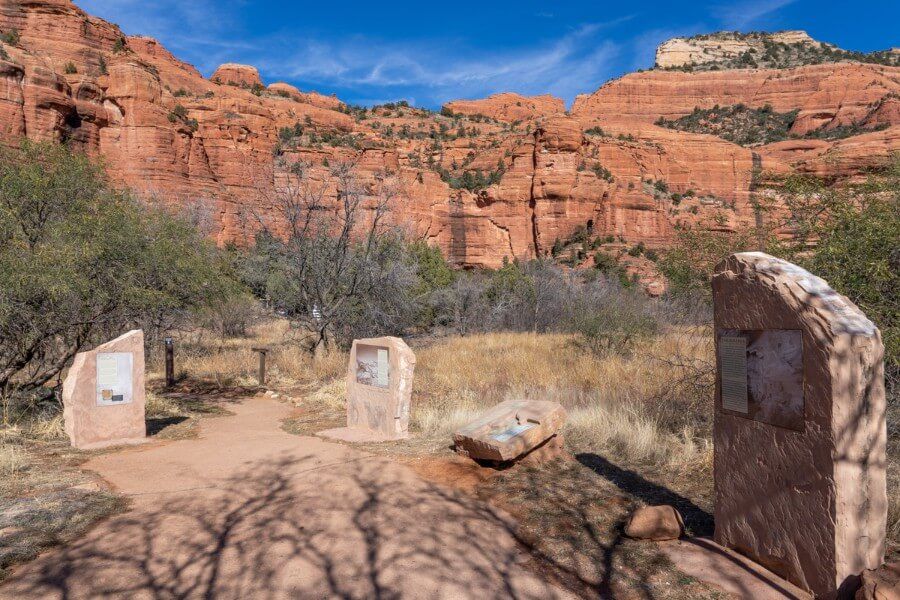
You will need two things to enter the Palatki Heritage Site:
- Either a Red Rock Pass or an America The Beautiful Pass
- A reservation from Recreation.gov which costs $1.00 each
You can buy a Red Rock Pass at this recreation.gov site in advance or you can buy one at the Palatki Heritage Site via a kiosk in the parking lot.
Red Rock Pass options include:
- 1 Day – $5
- 7 Days – $15
- Annual Pass – $20
Travel Tip: There is very limited service at Palatki so be sure to print or screen shot a digital copy of your reservation prior to visiting. You will have to show this reservation for entry.
If you have an America the Beautiful Pass, you can use this instead of purchasing a red rock pass. We used our national park pass to visit the Palatki Heritage Site.
Don’t have a national park pass? Read our guide featuring why an America the Beautiful pass is one of the best things you can purchase if you plan to visit multiple parks in a year.
Hiking Tip: If you plan to hike additional trails around Sedona over a period of 2–7 days, you should buy the 7 day pass because you will need it at other trailheads in the area.
Palatki Heritage Site Tours
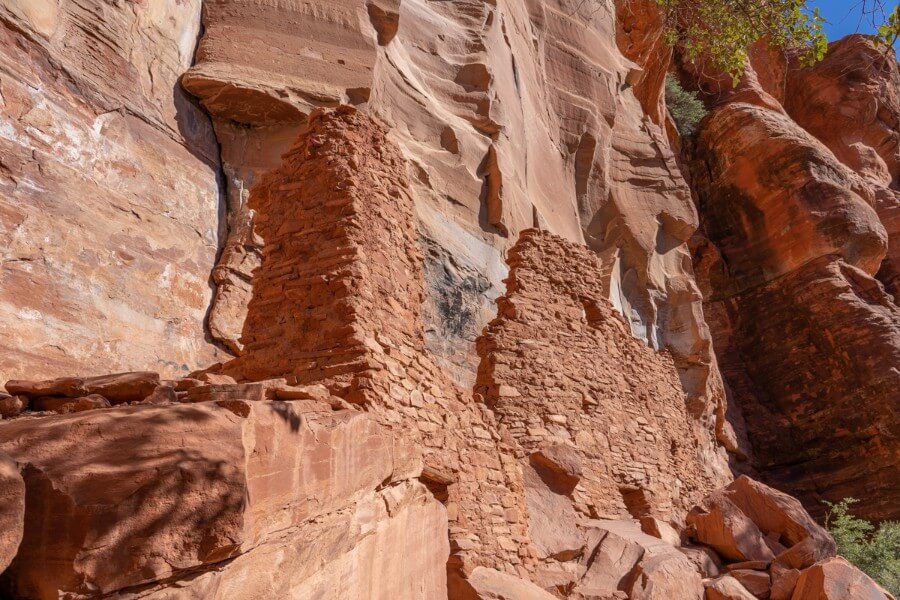
As we mentioned above, you will need a reservation to visit Palatki. A reservation includes a guided tour of the grotto and dwelling area. Guided tours run every half an hour and last about 60-90 minutes.
On most days, the last tour departs at 1:00pm and on Wednesdays, the last tour departs at 10:30am. You should plan to arrive about 15 minutes prior to the reservation time. If you’re late, there is no guarantee you can join the tour.
The Palatki visitor center is open 7 days a week from 9:30am to 3:00pm, except on Wednesdays when it’s open from 9:30am to 12:00pm. The site is closed on Thanksgiving and Christmas.
In addition to the tour, visitors can explore the small museum with informational exhibits, shop at the bookstore and walk the small hiking trails. Available services include vault toilets.
Unfortunately, no pets are allowed beyond the parking lot. Please be mindful of the warm temperatures if you are planning to leave your pet in a vehicle.
How To Get To The Palatki Heritage Site
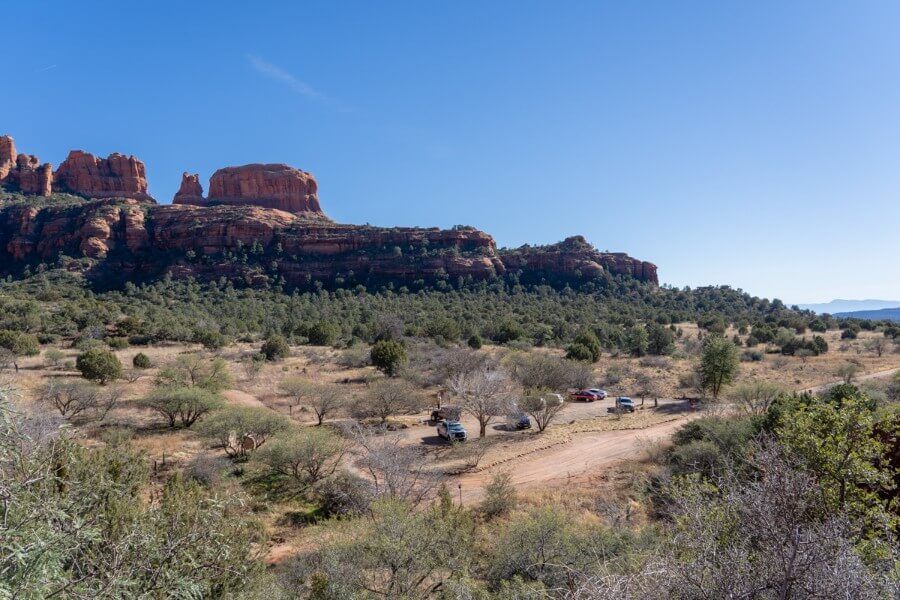
The Palatki Heritage Site is about 2.5 hours north of Phoenix and 1.5 hours south of Flagstaff. Many people visit this historical site as a day trip from Sedona because it’s about 20 miles south and less than 10 miles off the 89A.
- Address: 0290 North Forest Service Road #795, Sedona, AZ 86336
- Location: Google Maps
Forest Rd 525 leading to the Palatki Heritage Site from both Cottonwood and Sedona is a rough dirt road. It’s recommended to drive a 4WD vehicle but it’s passable for passenger cars and it will be slow going.
You should plan for extra time when visiting this site and leave 30-60 minutes of fudge time prior to your reservation at Palatki so you can drive safely. If you rent a Jeep, drive it to both Palatki Heritage Site and nearby Honanki, before hitting some of the best Jeep trails in Sedona.
Travel Tip: Harsh weather conditions such as rain, snow and extreme temperatures over 100°F will close Palatki. If it’s closed, you will see closed signs at access points along the road.
Directions From Sedona
Follow SR 89A west through Sedona and continue for 5.0 miles to the last traffic light. At mile marker 365, turn right onto Forest Rd 525. Continue straight on Forest Rd 525 for about 2 miles and the road will terminate in the Palatki parking lot.
Note: Head right when Forest Rd 525 intersects with N Loy Butte Rd. There will be a white sign for the Palatki Heritage Site at the intersection.
Directions From Cottonwood
Take 89A north from Cottonwood for about 7.0 miles. Turn left onto Forest 525 Rd about 0.5 miles north of mile marker 364 for about 7.0 miles. Continue straight on Forest Rd 525 for about 2 miles and the road will terminate in the Palatki parking lot.
Need help planning your trip to Sedona?
Our Sedona travel guidebook gives you hidden gem hiking trails, secret caves, vortex sites, ancient ruins, wineries, jeep trails, photo spots, where to eat and stay, 1-5 day itinerary ideas and much more. Plus, you’ll get an exclusive map to use in Sedona!
View Guidebook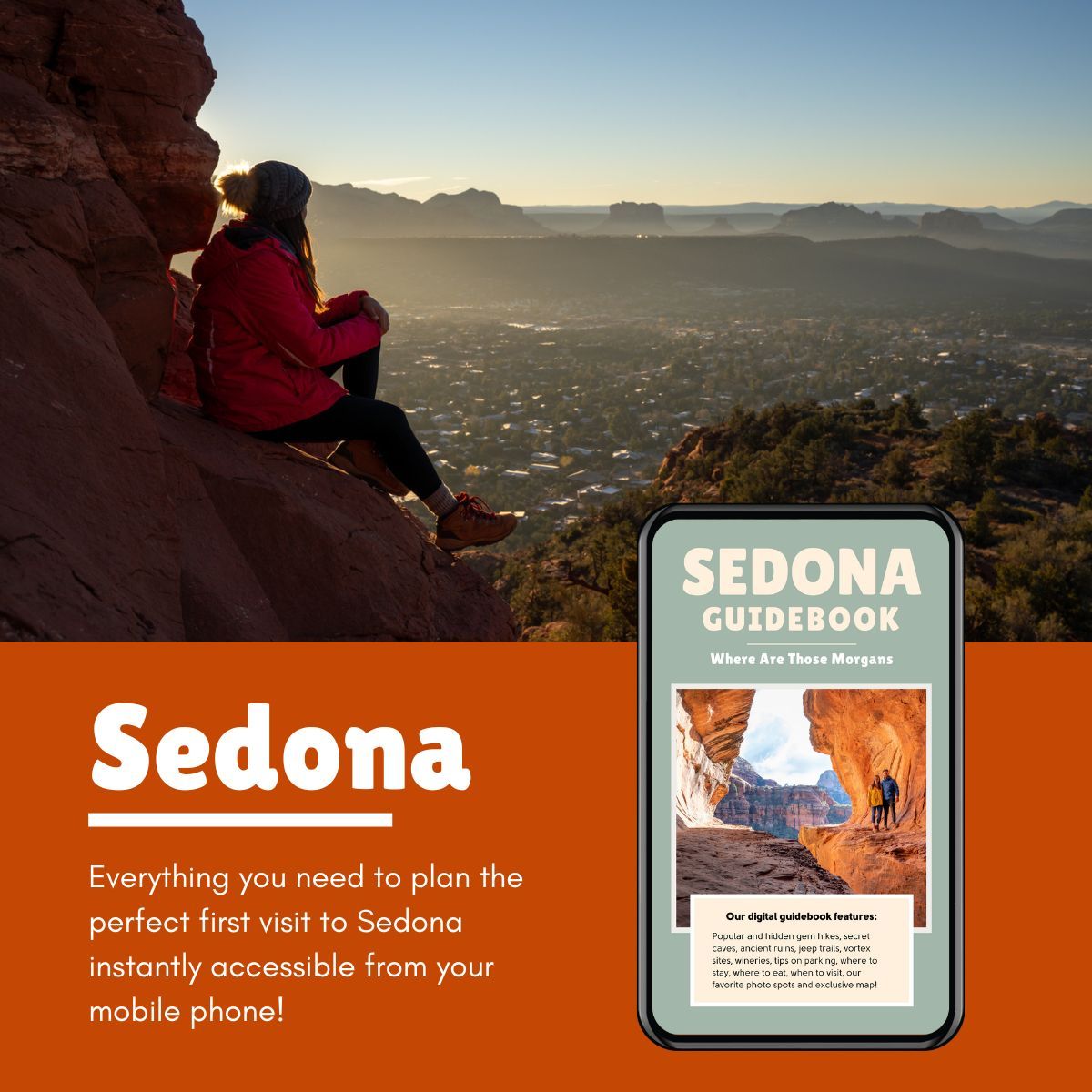
Palatki Guided Tour Walkthrough
The Palatki Heritage Site is a working archeological area where specialists continue to find artifacts and evidence about indigenous cultures from Arizona. When we visited, a small portion of the trail was inaccessible due to research, but this did not affect our visit.
From experience, we can tell you the informed docents who perform these tours are absolutely wonderful and extremely knowledgable. Below is a description of each trail so you know exactly what to expect for your visit. Good walking shoes are recommended.
1. Sinagua Cliff Dwellings
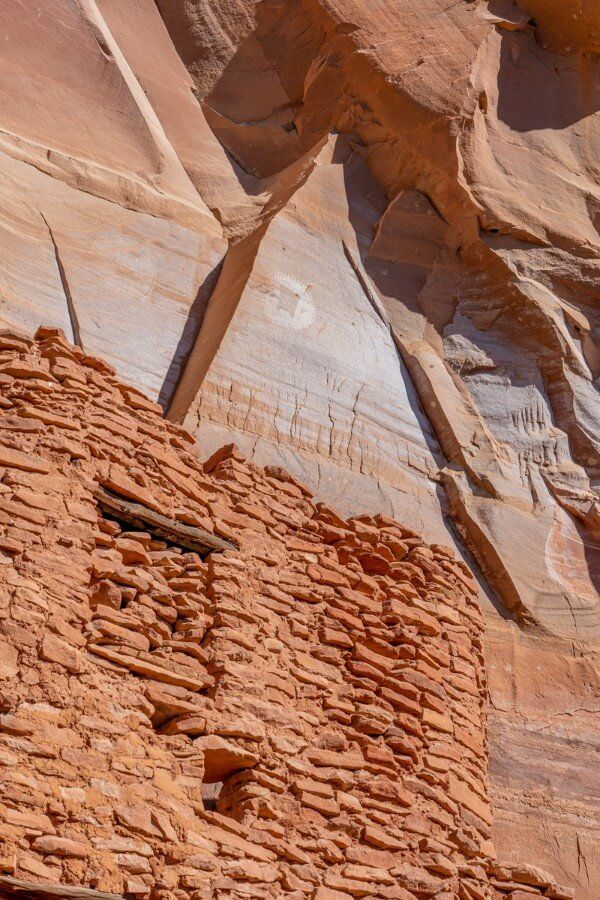
Depending on your tour, you will start at the cliff dwelling or the alcove. We started at the dwelling and learned this is the largest ruin at Palatki. It also features a few extremely large and faded pictographs.
In order to reach this dwelling, you must walk up 60 uneven steep stairs for about 0.1 mile. Made from Supai Sandstone, archeologists believed two rooms each housed a single family with an estimated of 60 to 80 people living here at one time.
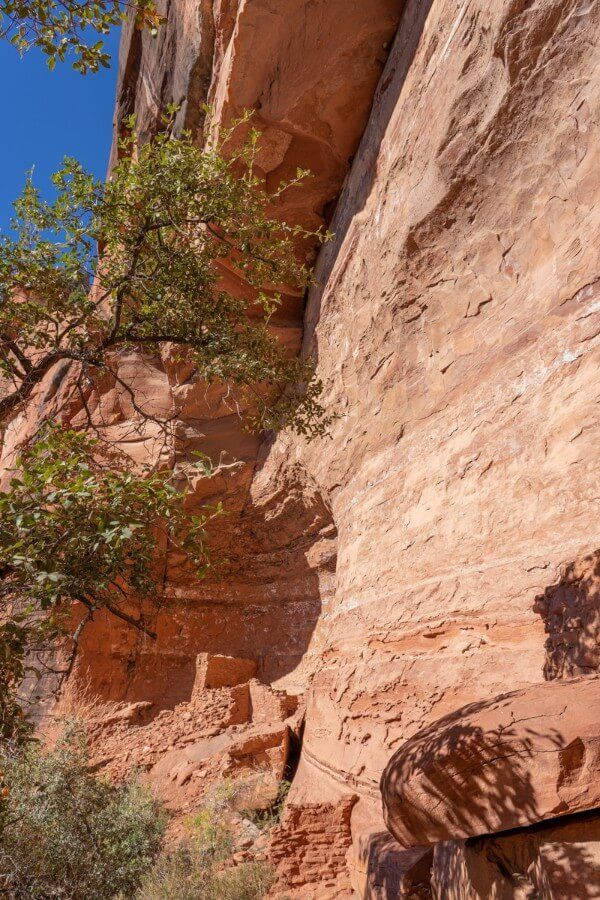
If you look closely, you can still see some remnants of ancient pottery, agave pieces and corn cobs. It’s here you will also learn about the painted symbols located above the dwelling. This fertile land supported the Sinagua people for hundreds of years. They had no written language so little is known about their migratory patterns.
But according to the oral history of their Hopi descendants, they may have left this area for a number of reasons including disease, drought or conflict with other tribes. By 1450 AD, the Sinagua had completely vanished from the surrounding Verde Valley.
2. Alcove Trail
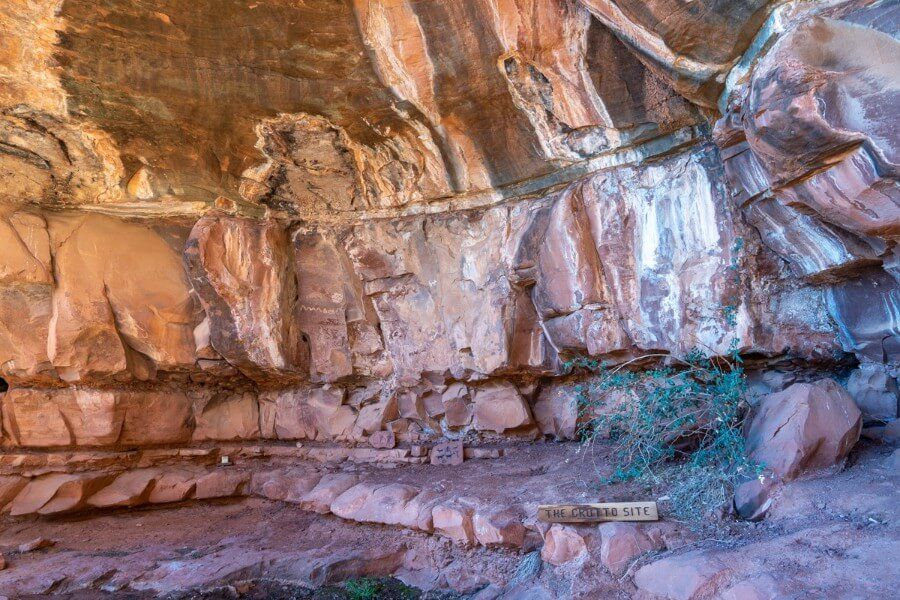
The next trail is not as steep but it’s just as rewarding. One of the highlights along this trail is the grotto which often fills with water in heavy rains. During your guided tour, you will learn why this grotto meant so much to numerous cultures spanning hundreds of years.
To the right of the grotto, there is a smaller alcove which was used for roasting agave. You will see many animal pictographs scattered along the wall and these now have become black with soot.
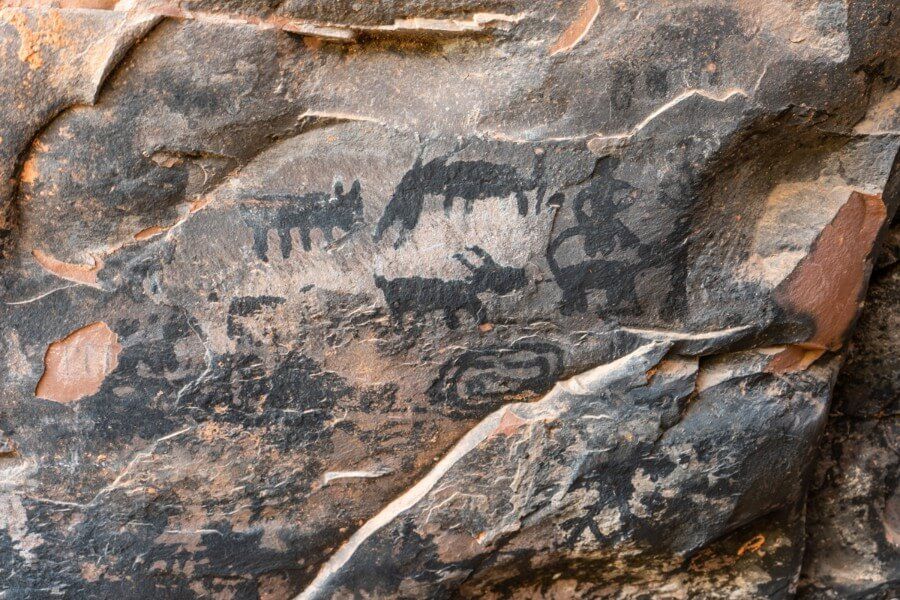
Archeologists estimate some of these drawings date back 6,000 years ago to numerous prehistoric cultures who traveled through the Verde Valley predating the Sinagua.
You will see a myriad of pictures and symbols which have been well preserved due to their shaded location in the alcove. Look for drawings of bears, snakes, deer and even people while you listen to the tales from your tour guide.
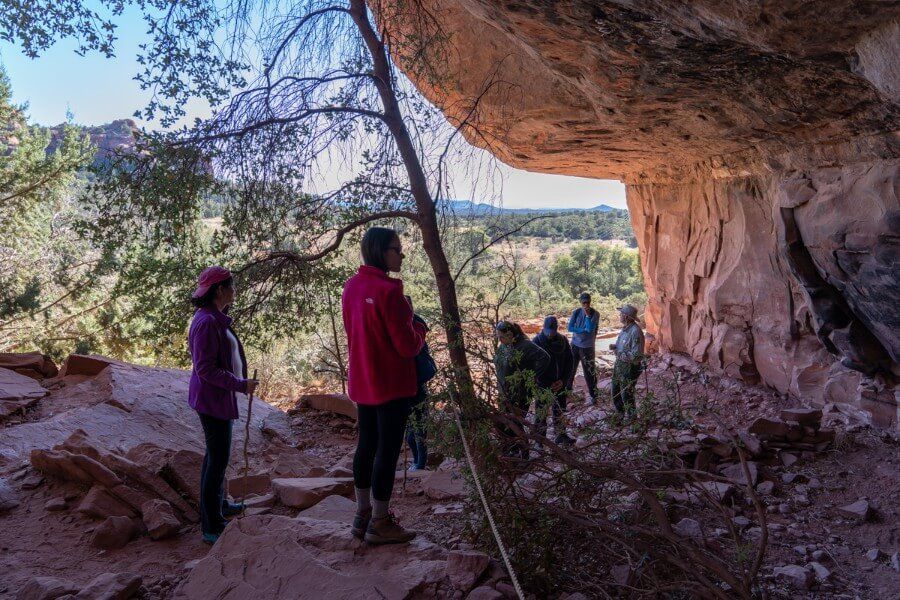
Your tour guide will explain that some of these symbols have been created by cultures who came after the Sinagua including the Yavapai and the Apache tribes.
As the trail terminates you can also see Charles Willard’s cave house. But it ‘s now closed to the public to protect an endemic species of bat.
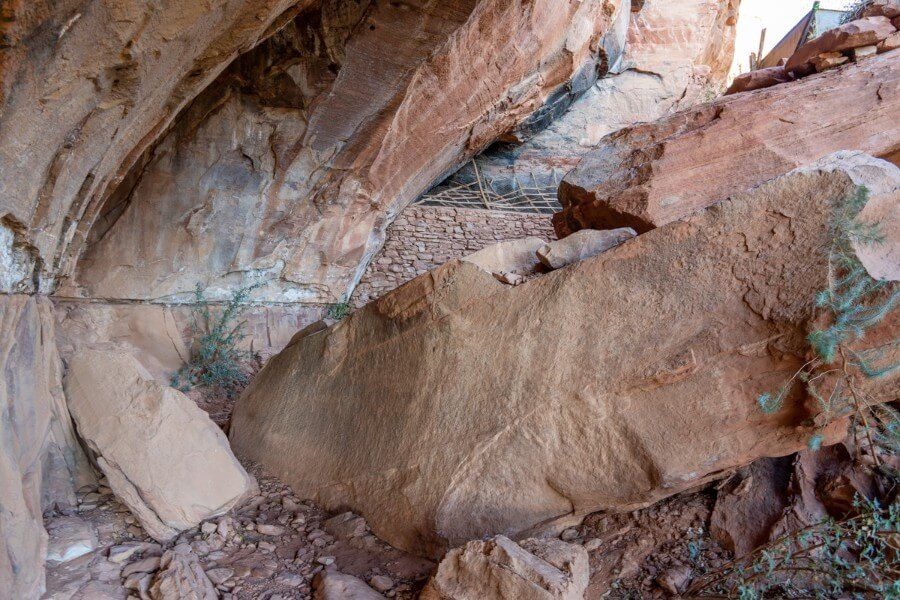
3. Wheelchair Accessible Trail
The last trail is a short self-guided wheel chair accessible loop that begins just past the vault toilets. It winds slightly though the heritage site so you can have a better view of the dwellings and the surrounding cliffs. We did not walk this trail on our tour, but we could walk it after the tour was over.
Best Time To Visit
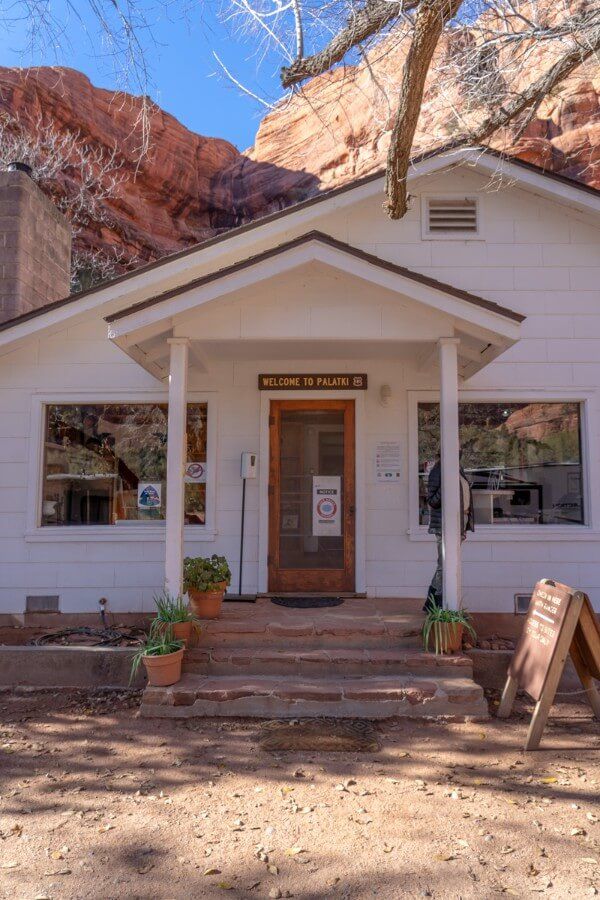
Spring and fall would be the best time to visit Palatki when temperatures are cool. Arizona summer days are extremely hot ranging anywhere from 95°F to 110°F. Very heavy rains are common late June to early August during the early afternoon. It’s important to drink plenty of water and hydrate properly, especially in the summer months.
The Palatki Heritage Site is open year round. When visited Sedona in December and the weather was perfect for hiking at about 60°F. Visiting in the off season also meant fewer crowds.
Winter days in Arizona tend to have an average temperature of around 60°F with lows commonly in the teens. Snowfall is rare but is possible. Forest Rd 525 may be impassible in bad weather so be sure to check the weather forecast when you visit and plan appropriately.
Etiquette Tips
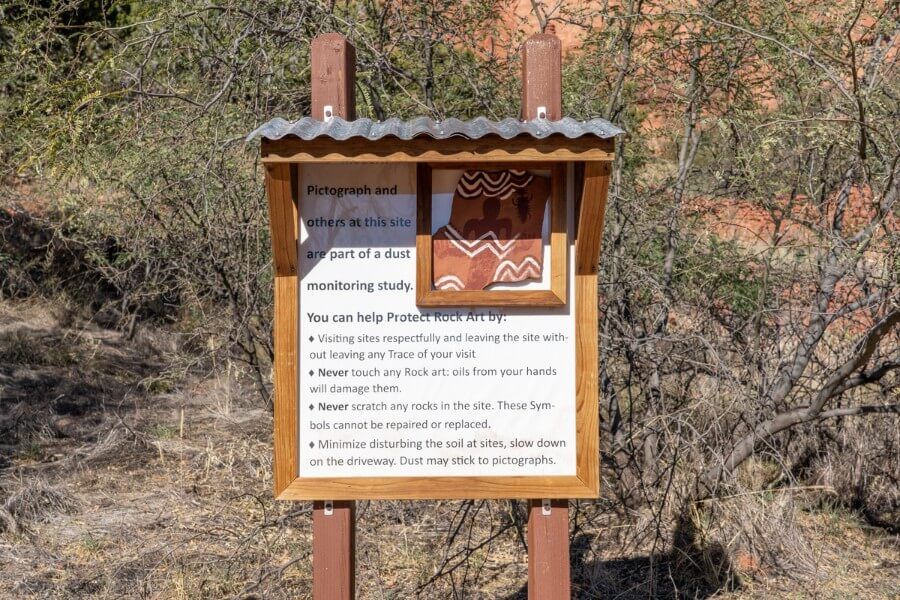
During your tour, you will learn about how we have lost a lot of this site due to human recklessness. There is a list of rules on the Palatki grounds, but here are a few important etiquette tips to consider for your visit:
- No sitting, climbing or standing on ruins or cliff dwelling walls. Ruins are fragile and any of these actions will compromise the historical site.
- Never touch artifacts. These are important items that should remain exactly where they are located.
- No camping at historical sites. Fires can destroy prehistoric organic materials and also covers the rock art with soot. Check out the DYRT PRO for nearby camping options.
- Stay on marked trails. It’s important not to venture off the trails because our footsteps can destroy fragile ecosystems.
- No graffiti. This destroys rock art and is extremely disrespectful to the cultures who created these wonderful images.
There is a very limited number of tickets available due to preservation concerns of the area. So if this is a must-do on your Sedona itinerary, be sure to make a reservation as soon as you know your dates.
Hiking Tip: When exploring outdoors, be sure to always practice the seven principles of Leave No Trace to preserve natural beauty so others can enjoy the same environments.
Palatki Or Honanki?
Personally, we preferred Palatki over Honanki Heritage Site because we had a knowledgeable and funny guide who made our tour extremely enjoyable.
When you visit Honanki, you explore the site on your own, but you will see more dwellings. If you want the chance to speak with a guide, visit Palatki.
The Morgan Conclusion
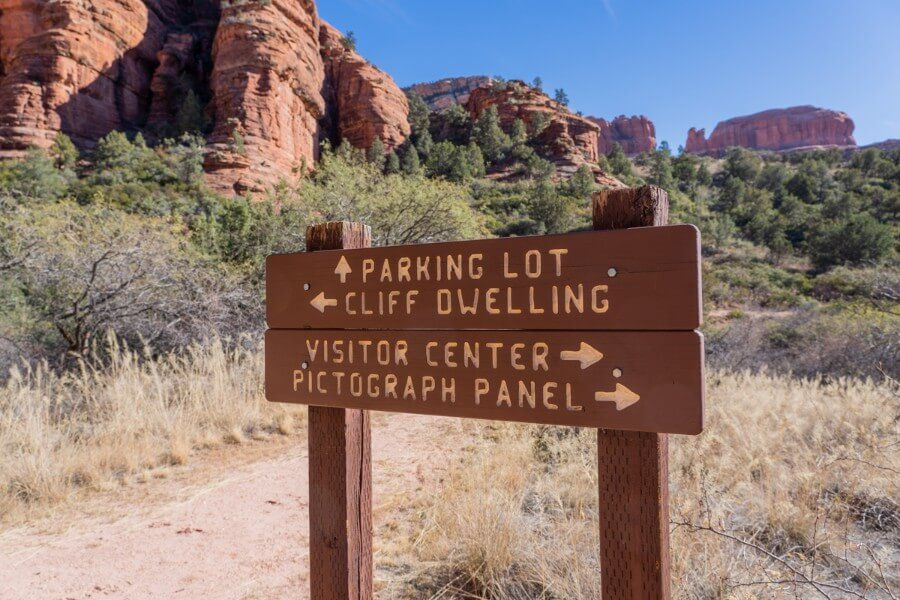
We think visiting local ancient ruins is among the unmissable things to do in Sedona because they showcase the region’s indigenous history. Getting free entry with an America the Beautiful Pass is a great bonus, plus the guided tour is fantastic and doesn’t cost much at all.
Is Palatki Heritage Site worth it?
Yes, the Palatki Heritage Site is worth visiting because it’s a great place to learn about the indigenous tribes from Arizona. Even if you have been to Montezuma Castle or Tuzigoot, this historical site offers you the chance to see rock art close up which you won’t have seen at those two other sites.
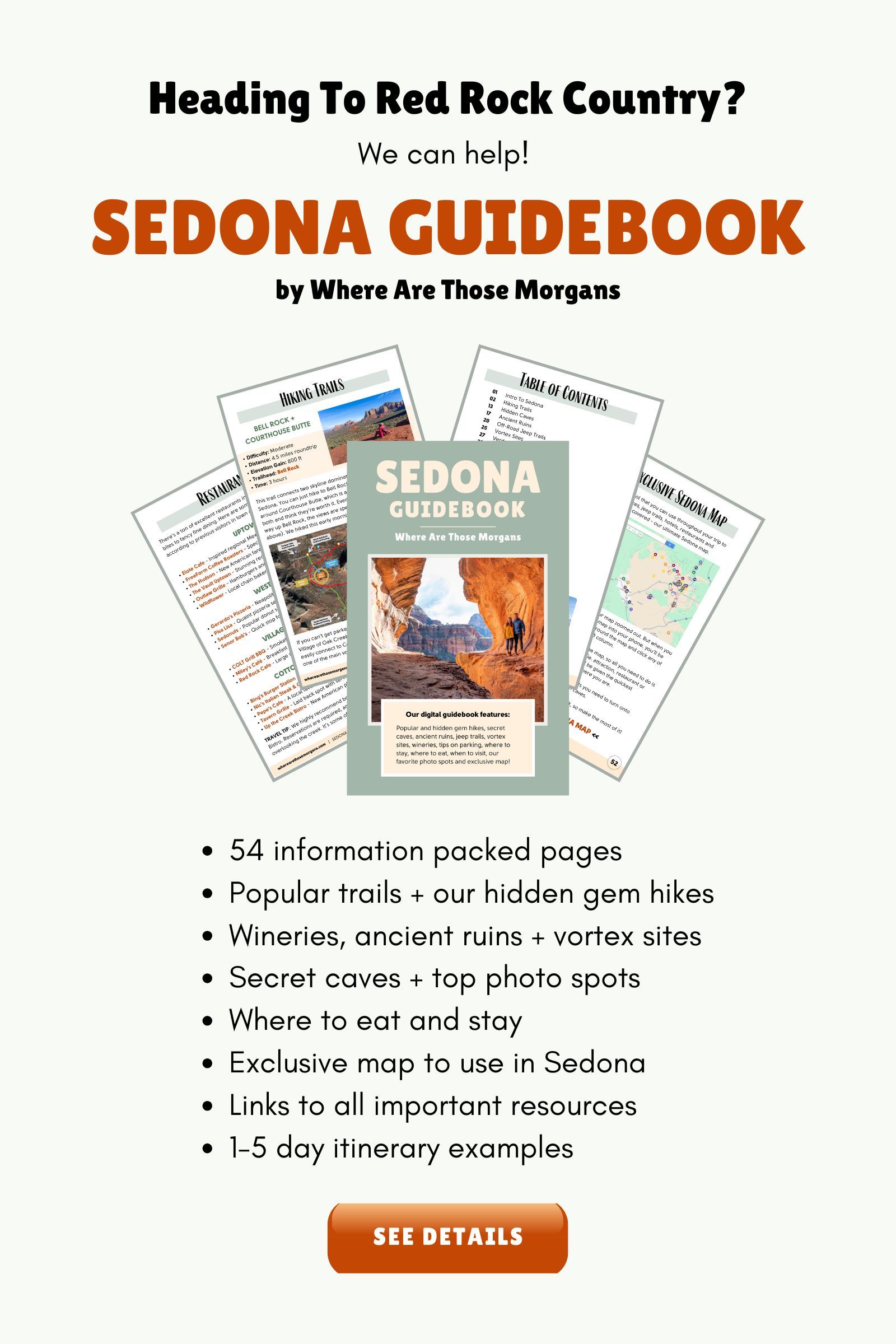
Next Steps
We hope our guide to visiting Palatki Heritage Site helps with planning your trip to Sedona.
Don’t forget you can book a travel planning video call with us if you’d like our expert help organizing your trip to Sedona. We can answer any questions you have or walk through a personalized itinerary to make the most of your time.
Still researching for your trip?
- What to know about a first trip to Sedona
- Here are the top things to do in Sedona
- Here’s exactly where to stay in Sedona
- These are the unmissable hikes in Sedona
- Here’s our 1-5 days in Sedona itinerary
- This our ultimate 7-day Sedona itinerary
Finally, if you’ll be visiting more places on the same trip, we recommend reading our Arizona travel guide for more helpful tips and advice.
Happy Travels,
Mark and Kristen
Enjoy this guide? Pin it for your visit!
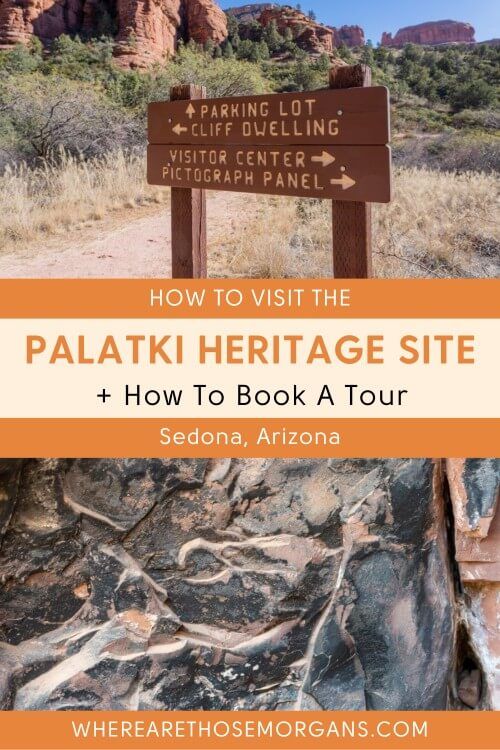
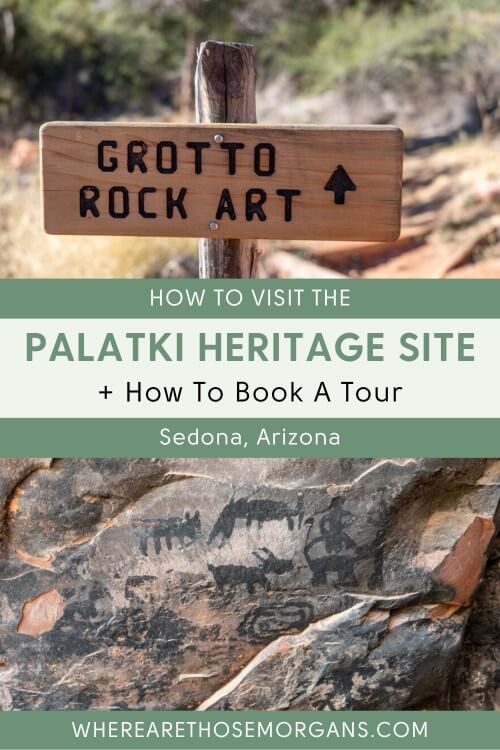
All Rights Reserved © Where Are Those Morgans, LLC. Republishing this article and/or any of its contents (text, photography, maps, graphics, etc.) in whole or in part is strictly prohibited.

